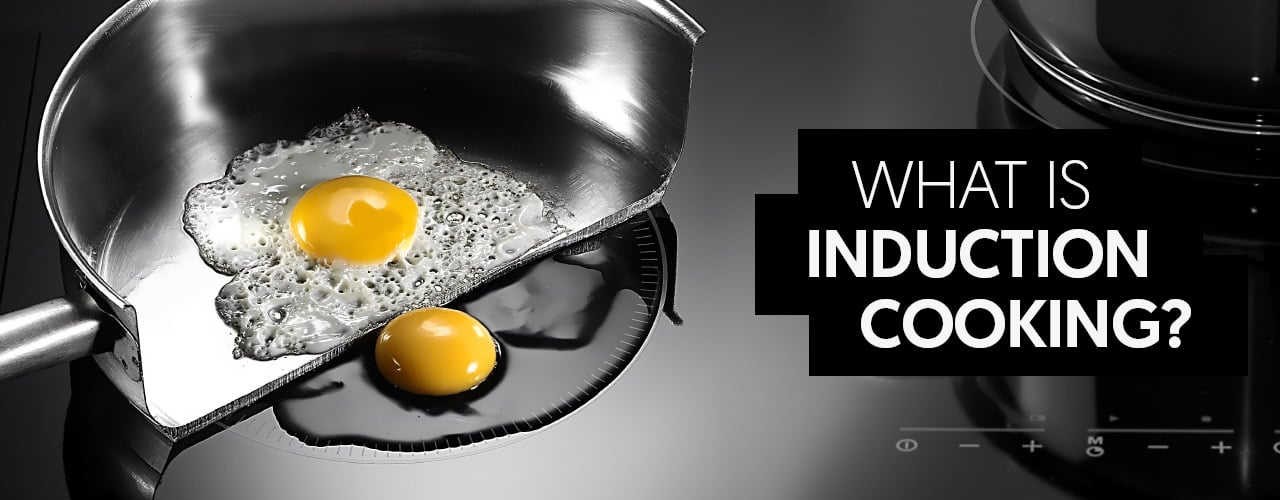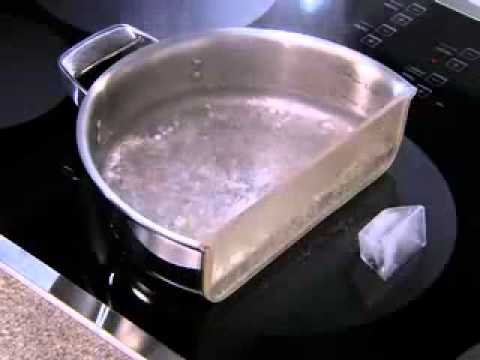Induction cookware uses an electromagnetic field to heat the cookware directly, resulting in fast and even cooking. This is achieved through a copper coil under the cooktop that creates magnetic energy, which interacts with induction-compatible cookware to make it hot.
Induction cooking skips the step of heating the cooktop, making it a quick and efficient cooking method.
How Induction Cookware Works
Induction cookware uses magnetic energy from a copper coil under the cooktop to heat compatible cookware. It offers the advantage of being remarkably safe and easy to clean but requires unique magnetic cookware for optimal performance.
What is induction cooking?
Induction cooking is a revolutionary method that utilizes electromagnetic fields to generate heat directly within the cookware rather than on the stovetop surface. Unlike traditional gas or electric cooktops, which heat the surrounding air and then transfer that heat to the cookware, induction cooking cuts out the intermediate step by directly heating the cookware.
How does induction cooking work?
Induction cooking uses a magnetic field to create an electric current within the cookware. When the cookware is placed on the induction cooktop, an alternating current flows through a coil beneath the surface, which creates a rapidly changing magnetic field. This magnetic field then induces an electric current in the cookware’s metal base, generating heat instantaneously.
It’s important to note that for induction cooking to work, the cookware must be made of a ferromagnetic material, such as cast iron or stainless steel. Non-magnetic materials, such as aluminum or copper, will not work on induction cooktops unless they have a layer of magnetic material on the bottom.
Advantages And Disadvantages Of Induction Cookware
Advantages
- Energy efficiency: Induction cooking is highly energy efficient, as it heats the cookware directly, resulting in faster cooking times and less wasted heat.
- Safety: Induction cooktops have no open flames or exposed heating elements, making them safer, especially in households with children.
- Precise temperature control: Induction cooktops offer precise temperature control, providing more accurate and consistent cooking results.
- Easy to clean: Since the stovetop surface does not heat up, spills and overflows do not stick, making induction cooktops easy to clean.
Disadvantages
- Unique cookware required: Induction cookware must be made from ferromagnetic materials to work on induction cooktops. This may require investing in new cookware if you don’t already have compatible pots and pans.
- No visual indicator of heat level: Unlike gas burners with visible flames, induction cooktops do not have a visual indicator of the heat level.
- Cost: Induction cooktops can be more expensive than traditional gas or electric cooktops, although their energy efficiency can help offset the initial cost over time.

Frequently Asked Questions Of How Induction Cookware Works
What Is The Disadvantage Of Induction Cooking?
One disadvantage of induction cooking is that unique cookware is required. You must use magnetic cookware, or the induction process won’t work correctly, and your food won’t cook. This may require investing in cookware along with the induction cooktop.
Are Induction Pans Healthy?
Yes, induction pans are healthy. Induction cooktops are safe and easy to clean because there is no open flame or exposed heating element. They heat the cookware directly, which means spills and overflows do not stick to the surface.
However, to use induction cookware, you must ensure it is magnetic and compatible with the cooktop.
What Happens If Water Falls On Induction Stove?
If water falls on an induction stove, it can cool the surface rapidly and potentially cause cracking or damage. Induction stoves heat cookware through an electromagnetic field, not the stove surface. Avoid contact between water and the hot stove surface to prevent any harm.
Do Nonstick Pans Work On Induction?
Nonstick pans can work on induction cooktops with a magnetic stainless steel, cast iron, enameled iron, or nickel base. However, nonstick pans made from unapproved materials, like aluminum, will not be compatible with the induction cooktop.
Conclusion
Induction cookware uses an electromagnetic field to heat the cookware directly rather than heating the stove’s surface. This innovative cooking method offers advantages such as safety, easy cleaning, and fast, even cooking. However, it does require magnetic cookware specifically designed for induction cooking.
Investing in induction cookware and a cooktop may be necessary for those interested in this efficient and convenient cooking technique.

Hi, I’m Esrat, and I’m so glad that you found me here at Happy Food Kitchen! I started Happy Food Kitchen in 2023 to have a creative, right-brained outlet to balance my very left-brained career in genetics.






